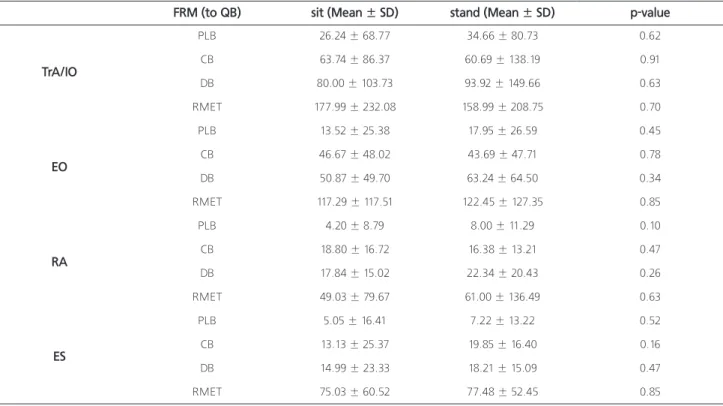A Study on EMG Activation Changes of Spinal Stability Muscles during Forced Respiratory Maneuvers
Purpose: The purpose of this study was to investigate whether changes in electromyography (EMG) activations of spinal stability muscles with respiratory demand change were due to changes in respiratory demand or in postural demand.
Methods: Forty healthy subjects (19male, 21female, 20.8±1.9years old) performed quiet breathing and four different forced respiratory maneuvers (FRM) (Pulsed Lip Breathing, Diaphragmatic Breathing, Combination breathing, and respiratory muscle endurance training breathing) while in sitting and standing positions. EMG data for four muscles (TrA/IO, EO, RA, and ES) were collected and filtered using a band pass filter (20~200Hz) and a notch filter (60, 120, 180Hz).
Results: There were no significant differences on percentage of change on %MVIC between QB and FRM (PLB, CB, DB, and RMET) between positions (all p>0.05).
Conclusion: Change of EMG activations during FRM to QB was induced by the change of respiratory demand not by changed postural demand.
Keywords: Spinal Stability, EMG, Respiration
Soon-Mi Hong
1, Mi-Gyoung Kweon
1, Ji-Won Park
11
